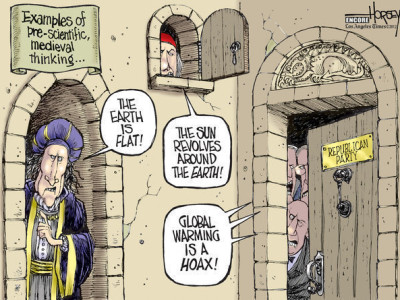Another edition of good news, bad news
The bad news is about climate change (no surprise). The more we learn, the more daunting the problem appears. Cases in point:
- A column in the journal Nature (subscription required) provided the short version of a report issued this past spring by the California Council on Science and Technology on what it will take for California to achieve the 80% reduction in greenhouse gas emissions from 1990 levels mandated by AB 32 and Executive Order S-3-05. The bottom line? Current technologies won’t get us there. “[A] concerted effort to deploy known technology could cut emissions by more than half, but getting all the way down to 80% cuts will almost certainly require major advances in near-zero-emissions fuels.”
- To make things worse, the Washington Post reported that global CO2 emissions jumped 6% last year, the largest increase on record. Emissions are outpacing the most pessimistic scenario considered in the IPCC’s 2007 report.
- Meanwhile, a team of researchers at NRDC and UCSF (joined by Berkeley Law student Linda Geballe) have tried to get a handle on the likely scope of future health costs from climate change by estimating the costs of “six climate change–related events (subscription required, Scientific American has a freely available description of the study and results) that struck the United States between 2000 and 2009,” all “from categories of climate change–related events projected to worsen with continued global warming.” The methodology obviously has some limits, but even taken as very rough estimates the numbers are attention-getting: direct health care costs of $740 million, and more than $14 billion in total health costs using EPA’s figures for the value of a premature death.
So what’s the good news? Experience shows that when we tackle environmental problems head-on, we can accomplish more than we think we can. A few recent reminders:
- The Contra Costa Times had this look back at the beginnings of the organization now known as Save the Bay in 1961. Three Berkeley housewives concerned about losing their Bay view catalyzed a novel regional planning effort that has gone far beyond reducing the pace of Bay filling to address pollution, marshlands restoration, and increased public access.
- Peter Lehner, at NRDC’s Switchboard blog, tells the story of conquering the supposedly “impossible” problem of lead in gasoline, first in the U.S. and then worldwide. Despite dire predictions of economic disaster, Lehner notes, “The United States ended up saving $10 for every $1 spent on removing lead from gasoline, due to reduced health costs, savings on engine maintenance, and better fuel efficiency.”
- And on the greenhouse gas emissions front, the same Washington Post story that reported the massive recent spike in emissions also had some positive news to report: the developed nations that ratified the Kyoto Protocol in 1997 (a group from which the US is conspicuously absent) have achieved the goal they set then of cutting emissions 8% from 1990 levels.
So maybe the take-away lesson is this: yes, the problems we face are tough, but we’ve learned that we can make serious inroads on problems that seem intractable. Time to roll up our sleeves and get to work.
Reader Comments
2 Replies to “Another edition of good news, bad news”
Comments are closed.







Unfortunately the Nature article did not fully represent the actual report by the California Council on Science and Technology. It focused on the glass half empty — the fact that California’s global warming law mandates that 2050 emissions reflect a reduction of 80 percent, not 60 percent. It virtually ignored the report’s conclusion that the state could reach a 60 percent emissions reduction with technologies that already exist or are expected to be commercially available in the next decade. See my ClimateSpeak.com posts here: http://bit.ly/uugOiN and http://bit.ly/sFhR8P
Unfortunately the Nature article did not fully represent the actual report by the California Council on Science and Technology. It focused on the glass half empty — the fact that California’s global warming law mandates that 2050 emissions reflect a reduction of 80 percent, not 60 percent. It virtually ignored the report’s conclusion that the state could reach a 60 percent emissions reduction with technologies that already exist or are expected to be commercially available in the next decade. See my ClimateSpeak.com posts here: http://bit.ly/uugOiN and http://bit.ly/sFhR8P